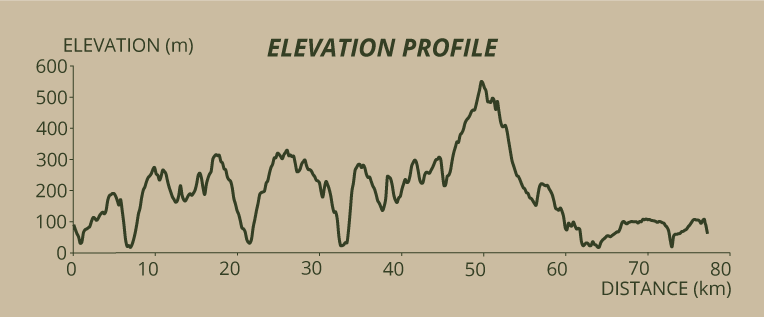The trail comprises coastal paths, from where we can observe rocky cliffs of considerable height and scenic value, many of vineyards in quarters or terraces bounded by small walls of volcanic stone, such as the hillsides of Baía da Maia, Ponta do Castelo and Baía de São Lourenço. These coastal paths also provide access to various swimming areas, such as the two main beaches - São Lourenço and Praia Formosa - both white sanded, since the accumulation of sediments results from the erosion of carbonated rocks, contrary to what happens in all other beaches of the archipelago. In addition, this trail also offers the chance to visit the interior of the island, especially its highest point, Pico Alto, at 587 metres of altitude.
From a cultural point of view, the trail offers the possibility of visiting places that date back to the settlement of the Azores, with Santa Maria being the first island to have been discovered. Places like the historical zone of Vila do Porto and Anjos, where the first colonizers settled and where the oldest chapel in the Azores was built, are veritable cultural relics. Moreover, you can also pass through the residential area of Santa Bárbara, where the uneven terrain contributed to the spatial distribution of houses, with most exhibiting a type of construction that is typical of the island.
As to palaeontology, we highlight the various deposits of fossils, such as Pedreira do Campo, Prainha and “Pedra que Pica” - Ponta do Castelo, each containing various fossils and old rock formations (dating back 5 million years) that are considered key to the interpretation of marine processes in the North Atlantic, especially oscillations in sea levels.
Since the average time for each stage is greater than six (6) hours, hiking this trail should be planned in accordance with the availability and physical condition of each hiker. Places to stay overnight include Rural Tourism Units and Hostels (B&B), as camping in the wild is prohibited in the Azores.






